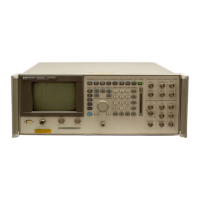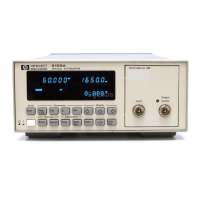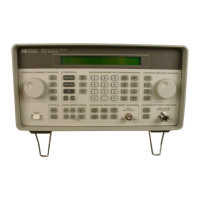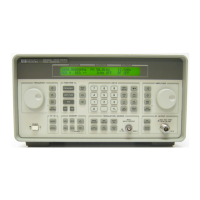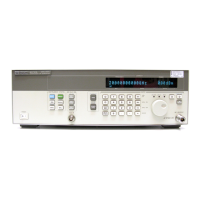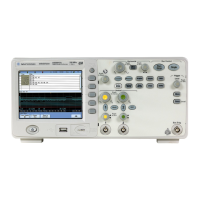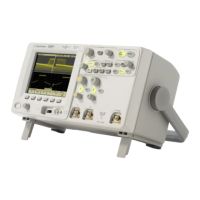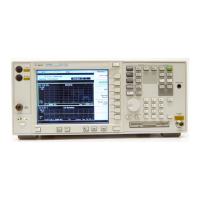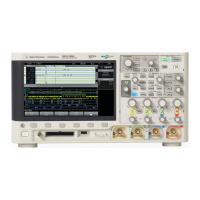733
S:\Hp8960\E1962B CDMA 2000\Pi Release\Reference Guide\Chapters\cdma2000_ts_err_msg_neg100.fm
-100 through -199 Error Message Descriptions
-113 Undefined header Indicates the header is syntactically correct, but it is
undefined for this specific device. For example, *XYZ is
not defined for any device.
-114 Header suffix out of range Indicates the value of a header suffix attached to a
program mnemonic makes the header invalid.
-120 Numeric data error This error, as well as errors -121 through -129, are
generated when parsing a data element which appears
to be numeric, including non-decimal numeric types.
This particular error is used if the device cannot detect
a more specific error.
-121 Invalid character in number Indicates an invalid character for the data type being
parsed was encountered. For example, an alpha in a
decimal numeric or a “9” in octal data.
-123 Exponent too large Indicates the magnitude of an exponent was greater
than 32000, see IEEE 488.2, 7.7.2.4.1.
-124 Too many digits Indicates the mantissa of a decimal numeric data
element contained more than 255 digits excluding
leading zeros, see IEEE 488.2, 7.7.2.4.1.
-128 Numeric data not allowed Indicates that a legal numeric data element was
received, but the device does not accept one in this
position for the header.
-130 Suffix error This error, as well as errors -131 through -139, are
generated when parsing a suffix. This particular error
message is used if the device cannot detect a more
specific error.
-131 Invalid suffix Indicates the suffix does not follow the syntax
described in IEEE 488.2, 7.7.3.2, or the suffix is
inappropriate for this device.
-134 Suffix too long Indicates the suffix contain more than 12 characters,
see IEEE 488.2, 7.7.3.4.
-138 Suffix not allowed Indicates that a suffix was encountered after a
numeric element that does not allow suffixes.
-140 Character data error This error, as well as errors -141 through -149, are
generated when parsing a character data element.
This particular error message is used if the device
cannot detect a more specific error.
-141 Invalid character data Indicates that the character data element contains an
invalid character or the particular element received is
not valid for the header.
-144 Character data too long Indicates the character data element contains more
than twelve characters, see IEEE 488.2, 7.7.1.4.
Error Message Description
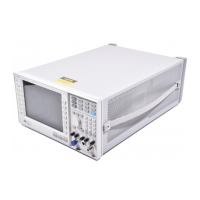
